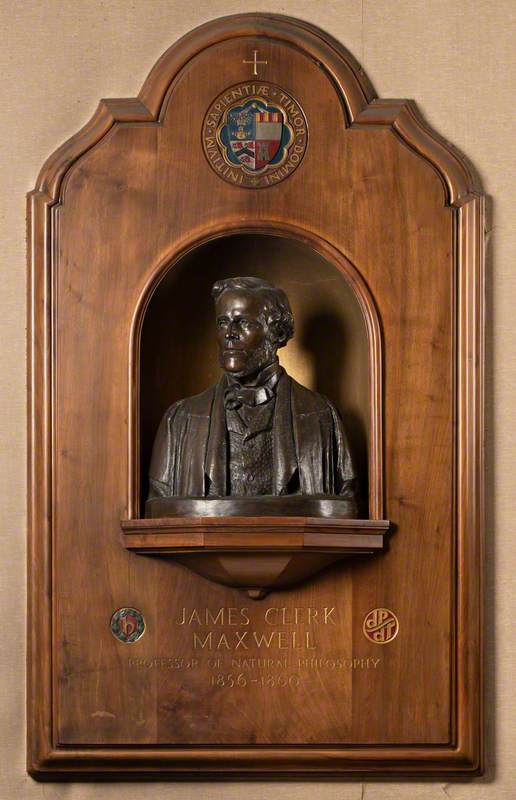
James Clerk Maxwell (1831–1879) 1956
Charles d’Orville Pilkington Jackson (1887–1973)
University of Aberdeen
Text source: 'Artists in Britain Since 1945' by David Buckman (Art Dictionaries Ltd, part of Sansom & Company)
1887–1973
British, English

James Clerk Maxwell (1831–1879) 1956
Charles d’Orville Pilkington Jackson (1887–1973)
University of Aberdeen
Text source: 'Artists in Britain Since 1945' by David Buckman (Art Dictionaries Ltd, part of Sansom & Company)
Charles d'Orville Pilkington Jackson [commonly known as Pilkington Jackson] was born in Garlennick, Cornwall, England, on 11 October 1887 and studied at Edinburgh College of Art from 1905 to 1910 and at the British School in Rome in 1910-11. He subsequently lived mainly in Scotland where he worked as a sculptor for over forty years.
He made the World War One war memorial in Rothsay, Scotland, in 1922 following a design by Charles E. Tweedie & Sons and was supervising sculptor for the Scottish National War Memorial at Edinburgh Castle. Jackson worked on numerous public commissions, notably the equestrian statue of Robert the Bruce at Bannockburn (1964). He was on the National Register of Design and created a display figure, ‘Jenny Weave’, for the textile hall in the 'Enterprise Scotland' exhibition of Scottish industrial design held at the Royal Scottish Museum, Edinburgh in 1947.
Jackson was a frequent exhibitor at the Royal Scottish Academy in Edinburgh from 1910 to [posthumously] 1974 and an occasional exhibitor at the Royal Academy in London from 1911 to 1956. He also exhibited at the Royal Glasgow Institute of the Fine Arts; the Walker Art Gallery in Liverpool; Royal West of England Academy in Bristol; and at the Royal Society of British Artists in London. He was elected an Associate of the Royal Society of British Artists (ARBA) in 1922; and an Associate of the Royal Scottish Academy (ARSA) in 1956. He was President of Society of Scottish Artists from 1942 to 1945.
Jackson's address was given as 35 Morningside Drive, Edinburgh in 1910 and 1912; 20 Harrison Road, Edinburgh in 1913 and 1914; 12 Church Lane Edinburgh in 1919 and 1934; 41 Murrayfield Road, Edinburgh in 1947 and 1953; 4 Polworth Terrace, Edinburgh in 1954 and 1973. He died in Edinburgh on 20 September 1973.
Text source: Art History Research net (AHR net)